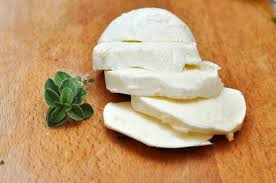Mozzarella is a traditionally southern Italian dairy product made from Italian buffalo’s milk by the pasta filata method. Mozzarella received a Traditional Specialities Guaranteed certification from the European Union in 1998. This protection scheme requires that mozzarella sold in the European Union is produced according to a traditional recipe.
Uses
Benefits
-
Vitamins
One ounce of mozzarella contains niacin, riboflavin, thiamine, biotin and vitamin B6. Because these are water-soluble vitamins, the body does not store them, so eating mozzarella cheese satisfies an immediate nutritional need. They are important to maintain healthy skin and vision and the formation of red blood cells. Mozzarella also contains fat-soluble vitamins such as A, D and E, which are important for bone growth, absorption of calcium and protection of cell membranes.
-
Minerals
One ounce of mozzarella cheese has 183 milligrams of calcium, which is over 18 percent of the recommended daily intake. Calcium is important to maintain bone structure and protect tooth enamel. Mozzarella also contains 13 percent of the recommended daily amount of phosphorus, which is essential for the body to use calcium. Other nutrients found in mozzarella include potassium, chloride, iron and sodium.
-
Other Benefits
Eating mozzarella cheese offers other health benefits in addition to the vitamins and minerals it provides. Mozzarella cheese is a good source of protein, which is important for energy and muscle maintenance. Consuming mozzarella cheese may protect against gout, a painful condition that results in the buildup of uric acid crystals in the joints. The calcium found in mozzarella cheese also contributes to weight loss and provides protection against breast cancer and metabolic syndrome, which is a group of conditions that increase the risk of developing heart disease or stroke.
Cautions
- Mozzarella is created from milk, but the type of milk varies among cheeses. Some mozzarella is made using whole milk and contains a fat content of at least 45 percent. Other types of mozzarella use a mixture of whole milk and part skim milk. Skim milk has the fat removed, leaving the nutrient-dense portion behind. Mixing skim milk into the base for mozzarella reduces fat content. Part skim milk mozzarella contains between 30 and 45 percent fat content. If you are considering weight loss, read labels on mozzarella to determine which type contains skim milk.
Interactions
n/a
Other names
- n/a
References
Source: Wikipedia, https://en.wikipedia.org/wiki/Mozzarella
LiveStrong, http://www.livestrong.com/article/268074-nutrition-facts-on-mozzarella-cheese/

